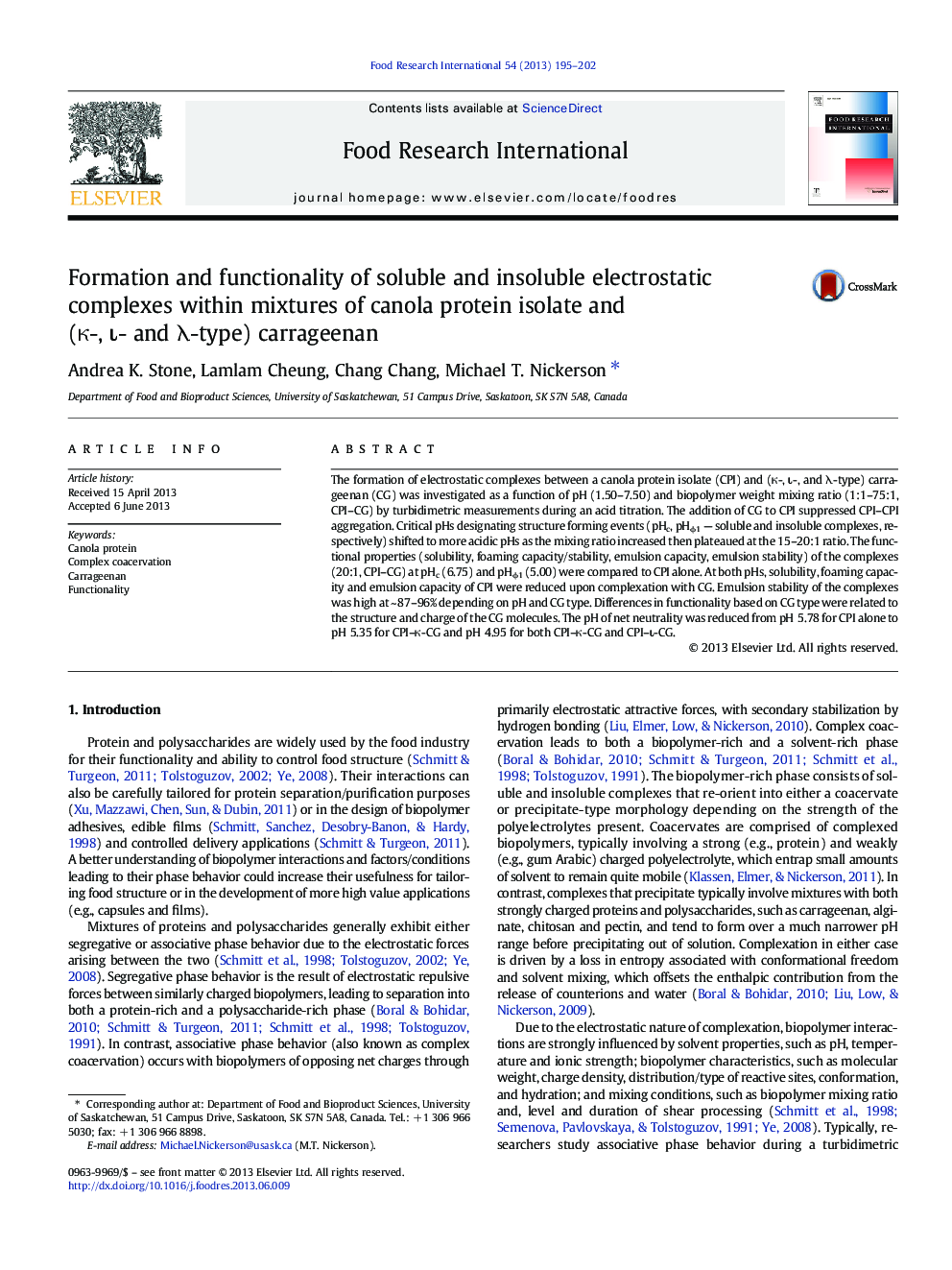| Article ID | Journal | Published Year | Pages | File Type |
|---|---|---|---|---|
| 6397221 | Food Research International | 2013 | 8 Pages |
â¢Optimal complex formation occurred at a 15-20:1 protein:polysaccharide ratio.â¢Solubility, foaming and emulsion capacities were reduced upon formed complexes.â¢Foaming stability was improved for complexes at pH 5 relative to canola protein.
The formation of electrostatic complexes between a canola protein isolate (CPI) and (κ-, ι-, and λ-type) carrageenan (CG) was investigated as a function of pH (1.50-7.50) and biopolymer weight mixing ratio (1:1-75:1, CPI-CG) by turbidimetric measurements during an acid titration. The addition of CG to CPI suppressed CPI-CPI aggregation. Critical pHs designating structure forming events (pHc, pHÏ1 - soluble and insoluble complexes, respectively) shifted to more acidic pHs as the mixing ratio increased then plateaued at the 15-20:1 ratio. The functional properties (solubility, foaming capacity/stability, emulsion capacity, emulsion stability) of the complexes (20:1, CPI-CG) at pHc (6.75) and pHÏ1 (5.00) were compared to CPI alone. At both pHs, solubility, foaming capacity and emulsion capacity of CPI were reduced upon complexation with CG. Emulsion stability of the complexes was high at ~ 87-96% depending on pH and CG type. Differences in functionality based on CG type were related to the structure and charge of the CG molecules. The pH of net neutrality was reduced from pH 5.78 for CPI alone to pH 5.35 for CPI-κ-CG and pH 4.95 for both CPI-κ-CG and CPI-ι-CG.
